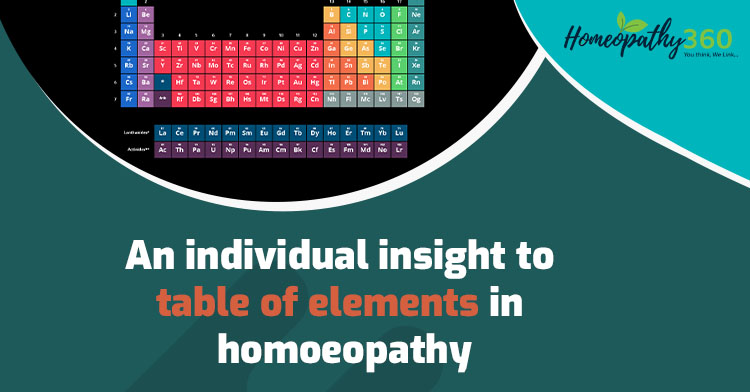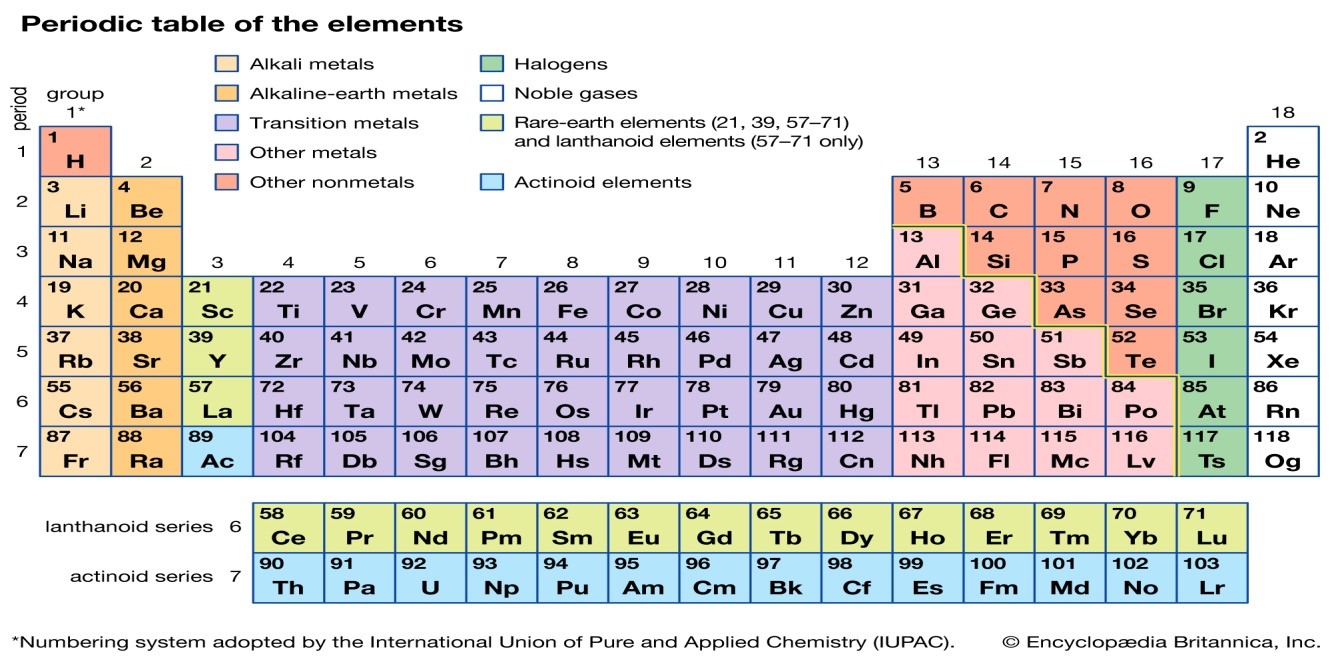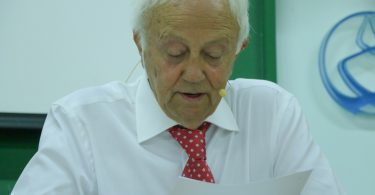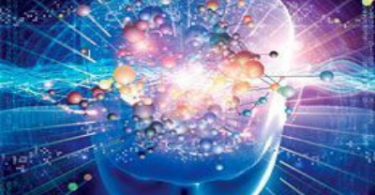
Abstract: The periodic table is classification of elements of mineral kingdom which provides elementary material structure of whole universe. The minerals are concerned with structure and organisation. Similarly, structure and organised nature is found in humans. Certain trends are observed within the elements of periodic table which corresponds to human constitution, the interpretation of which reveals homoeopathic significance of elementary prescribing. It has been observed that in accordance with the physical and chemical aspect of elements, the humans evolve along the same pattern. The study of periodic table in relation to homoeopathic materia medica is thus essential for good prescribing.
Keywords: Homoeopathy, homoeopathic elements, mineral kingdom, periodic table
Introduction: The periodic table is a classification of the chemical elements in a logical framework1 by Dmitri Mendeleev in 18692. The minerals consist of various elements and their compounds which serve as a source of medicine in homoeopathy3. The table is divided into rows, called periods or series and the columns, called groups. The table is arranged in 7 rows vertically and 18 columns horizontally. The rows of the periodic table can be seen as a replica of the development of a person, starting from the conception and ending in the old age and death4. The 7 series indicate the progressive line of development from one to the next. These series represent the 7 different books on life. Each story has different lessons, different story on evolution which portrays the inner image of an individual. The word series indicate the progressive line of development from one to the next. The 18 columns represent the way of developing in a particular stage5. Separately, the Lanthanides are an addition to and an extension of the other series in the system6. To understand a remedy, one should grasp the connection that ties together its myriad symptoms: the basic delusion, its source, the miasm to which it belongs, its symptoms7.

Figure 1: Periodic table of elements
The 7 horizontal series5,8,9:
Series 1 – Hydrogen series: The theme depicting this series is existence, birth, being incarnating. As the series has two elements, thus depicting two possibilities ‘to be or not to be’ in this world. They experience and have a great desire for unity which is expressed in a deep love for everyone on this earth. They experience the world like a baby without body. Like a way that there is no division between self and other in the same way that a fetus doesn’t feel this division. But later on, this sense of unity is gradually lost and they begin to feel that they are separate from the rest of the world. They feel as if they can’t bridge this chasm of separation anymore and it makes them feel lost and lonely. In the development of life, this series corresponds with unborn conception, the period of the unborn child.
Series 2 – Carbon series: The theme depicting this series is individual entity, value and separation. This level represents the development as an individual and questions ‘who am I?’ immediately followed by the question ‘what am I worth?’, ‘Am I a part of something or am I separate?’ The age that corresponds to this phase of development is that of the toddler. A toddler learns to distinguish between different things, most importantly the one between ‘I’ and the other person. The elements Lithium, Beryllium, Boron issues the feeling of dependence and no separation. There is feeling of insecurity to have an independent existence. The elements C, N, O develop separation and the element F completely separates and breaks the attachment.
Series 3 – Silicium series: The theme depicting this series is identity, family and relations. The question of identity arises as ‘I am separate, but who am I?’ This level issues the development and assertion of individual choice, ability to do things for self. This is the level of relationships, first within the family, then gradually including other people later on. This is the age of the teenager who finds out his position in relation to others. The area includes their own house, neighborhood and friends. The elements sodium, magnesium, aluminium issues the feeling that their identity is not completely developed and they are dependent. Silicon has fixed identity whereas P develops identity apart from what is given. The element S develops identity to ego and chlorine develops completely opposite of identity given.
Series 4 – Ferrum series: The theme depicting this series is task, trade, abilities, profession and security. This is the level where abilities start to develop. They learn to fulfill certain tasks in order to fulfill the question ‘I know who I am but safety is not yet developed. I can’t safeguard or defend myself.’ Security in terms of money, relationships, house, job and health. The elements potassium, calcium lacks the capacity to protect self and depends on others. Scandium, Titanium, Vanadium, and Chromium start to develop capacity to protect self. Manganese, Ferrum, Cobalt, Nickel, Copper, Zinc can protect selves and need the position maintenance for which they face opposition. Gallium, Germanium, Arsenic, Selenium, and Bromine begin to lose capacity of self-protection.
Series 5 – Silver series: The theme depicting this series is ideas, art, creativity and performance. The level revolves around the need to explore new ideas, be creative, perform and to be appreciated. This can be done through paintings and sculptures, through poetry, theatre, music, through speeches or through channeled information from other spheres. The area is that of the province. The need to process information, analyse, improvise, research, invent, devise, strategise, plan, solve, conclude. Speech and hearing are two specific physical themes that belong to the silver series. Speech to get ideas across to others, ears to receive the ideas. The elements, rubidium, and strontium lack the capacity to explore, create and perform rather depend on others for same. Yttrium, zirconium, niobium, molybdenum start developing capacity to explore new. Technetium, ruthenium, rhodium, palladium, silver, cadmium develops capacity and need maintaining it. Indium, tin, antimony, tellurium, and iodine lose the capacity to create and perform.
Series 6 – Gold series: The theme depicting this series is power, leadership, responsibility. Power is the central theme of this level which is all about leadership and power over other people with a feeling of responsibility for those people. This is the phase of maturity, the age at which people traditionally used to, and still do, come into a position of power. The area extends to include the whole country or even the whole world. The vision of a king has to be much broader than that of a baker: a king has to be able to see his whole country in order to plan his strategies. The eyes are associated with the gold series. They are one of the main problem areas of the remedies in this series. The elements, cesium, and barium lack the power of responsibility and depend on others. Lanthanum, hafnium, tantalum, tungsten start taking responsibilities. Rhenium, osmium, iridium, platinum, Aurum, mercury be the leader and maintain the same. Thallium, lead, bismuth, polonium, astatine start losing power to take responsibilities.
Series 7 – Uranium series: The theme depicting this series is magic and intuition. These are the people who know how to reach their goal through the power of intention and the power of thought. These people are often clairvoyant, or clairaudient or they simply know what is going on. They are the one who guide the evolution of mankind from behind the scenes, working with invisible forces. They know how to manifest the hidden knowledge and power deep within the subconscious mind. This is the time of very old age. They work with the whole world and the whole universe.
The 18 columns or groups or stages8,10,11:
Stage 1 – Beginning: The prefix that is associated with this stage is ‘in-‘ which indicates a beginning: to introduce, to initiate, to induce, to incarnate, impulsive. The spontaneous start, the impulsive begin. Things are done without being thought over, without reflection. This leads to naive, instinctive, simplistic and even childish or foolish behavior. It can lead to one-sidedness, which seems rigid, manic, alone and lonely.
Stage 2 – Finding a space: Unsure, timid. Doesn’t know what he is worth, what he can do, so remains passive or adapts to the situation. He just watches and feels watched at the same time, so he hides. He wants and needs protection and support. Bewildered and overwhelmed.
Stage 3 – Comparing: The prefix un- or under is often seen in this stage. They are under age, unofficial, under the mark, too small to participate in the real thing. Searching for the right thing, trying and comparing possibilities. He feels unsure and easily underestimates himself, so he cannot come to a conclusion. He avoids a decision, does not commit himself.
Stage 4 – Establishing: The real official start. It can be the founding of business, a marriage, a contract. The decision is made, the commitment stated. But one can feel unsure, astonished that it can be done. This can lead to irresolution and amazement.
Stage 5 – Preparing: The prefix belonging to this stage is ‘pre’ as in preparations, everything that precedes the real action. The preparation of the work, the plans and proposals after the start is made. But the work looks too big, the mountain too high to climb, insurmountable. So, he is easily discouraged, disappointed in his provisory plans. He alternates between going on and giving up, avoiding and postponing the work to his unrealistic goal.
Stage 6 – Proving: This is the challenge. One has to do things, prove one’s power. One is forced to act, it is inevitable and inescapable. It has to be done, the bridges are burnt behind him. It takes courage and bravery, in the extreme it is the daredevil. The fear of a possible failure can make him do his act alone, covered and secretive.
Stage 7 – Practising: Training leads to perfection. He can do his act, but knows he has still to learn a lot more. He has to practice to become a master of everything. He wants to learn from others, likes to cooperate to see how others do things. And he likes to teach and help others on their road to become a master.
Stage 8 – Perseverance: This is the real work, everything learnt so far has to be assembled, put together. But the amount of work is massive, huge. So, one needs perseverance, endurance, power and force. One feels pressurised due to lack of time, struggling against deadlines. One has to push and fight against the inertia of matter and resistance of people. One can be irritated by opposition.
Stage 9 – Success is in sight: The body of work has been done, but the last details have to be filled in. Practically the goal is reached. Virtually, the work is finished. Minor adaptations can be made after the dress rehearsal. The book can be completed after the corrections of the proofreaders. The contract just has to be approved and signed. But the fear of a blunder, a failure at the examination can make one the call the whole thing off.
Stage 10 – Lord and master: The goal is reached. One feels at the top, the summit. It is the glory of the winner, the brilliance of a victory. Everything falls into place. It is obvious that one is oneself, the noble person that decides independently and is self-sufficient. One can become so convinced of the success and righteousness, that one becomes rigid, fixed and haughty. Balance and imbalance.
Stage 11 – Preserving: This is the maintenance. One has to hold and keep the position reached, things have to be conserved and preserved. One wants to enjoy the affluence and prosperity. One wants to expand and share the wealth and fortune. Sustenance is possible, but heavy. One protects like a guardian or shepherd.
Stage 12 – Division: The power is exerted to the utmost, is overdone like a tyrant. One has still full power, but feels threatened from all directions. Suspicious of betrayal and attack one defends the power in an exaggerated way. It is overdone, leading to opposition. It is too much of a good thing: overshooting, overdoing, overstating, and boasting. The conservative one rules by division, defending against revolution and decline.
Stage 13 – Withdrawal: The position can only be held partly, half. One has to retreat and retire. One has to reduce and shrink. But one holds one to old and obsolete things with nostalgic feelings. The antique and outdated things from the past, which are the best, must be retired and withdrawn. But they are held in honor in the reduced space. The atmosphere is musty, moldy.
Stage 14 – Formal: Form without power; mask, facade, mummy, fossil. The real
power is gone, but externally it seems to function still well. One is
dismissed, put on a sidetrack. One feels powerless, weak, drained, discharged,
empty and hollow. One hides behind the form, diverting real responsibility.
Coward.
Stage 15 – Loss: This is the stage of disappearance of what has been
achieved, the bankruptcy, defeat, and death, being fired. Everything is burnt.
It can be felt like a shock, being poisoned. One can fight and resistance,
refusing to give over. Or one can give in as a surrender, sacrifice or
abdication. The best is to forgive and forget.
Stage 16 – Remembering: Things are over, in essence. Only the remnants and
ashes are left, the leftovers. The remnants can be in a state of decay, purification,
producing and offensive and rotten odor and ugly view. One is disgusted and
becomes an outcast. It is like a beggar in rags, seducing and tempting others
to give. Only memories are left, bringing one in a state of fantasy of
greatness. Deepening and reconciliation. Lazy.
Stage 17 – The end letting go: This is the eradication, all has to be erased. It has
to be ceased, extinguished, abolished, aborted and finalized. One can be forced
to quit or flee, being expelled as an outcast. One has to let go everything,
even forget memories. It frees, makes one loose from bonds. One can let go with
humor. The opposite is to hold on to things, even taking them without asking.
Stage 18 – Rest: This is the denial of action, of everything. It is the
pause between actions: rest, holidays, sleep, meditation, coma, death. Things
are latent, idle, inert, inactive and quiet. Externally there is no interaction
or communication: autism, cocoon. Internally there can be a transformation. The
sensation is of being free, floating, confused, and unconnected. This stage can
also be called Stage 0, as it is the Stage before Stage 1 of the new cycle.
The Lanthanides: The Lanthanides persons possess a high level of responsibility, they feel responsible for the world and that is why they become humanistic and live by their own rules. They need to be free and act with self-control and self-determination so they dislike being controlled and manipulated. They have a strong intellectual capacity, and they have desire of wisdom, spirituality, truth and anarchy6.
Conclusion: The study of key themes belonging to minerals and elements of periodic table enables us to expand our knowledge of medicines. Each individual element that forms the part of medicine has its own theme that blends to portray a remedy picture. This systematic approach allows the practitioner to spot a medicine with degree of accuracy.
References:
- Sankaran R. The substance of homoeopathy. Bombay: Homoeopathic Medical Publishers; 1994.
- Periodic Table of Elements [Internet]. Pubchem.ncbi.nlm.nih.gov. 2022 [cited 9 February 2022]. Available from: https://pubchem.ncbi.nlm.nih.gov/periodic-table/
- Sankaran P, Sankaran R. The elements of homoeopathy. Bombay: Homoeopathic Medical Publishers; 1996.
- Scholten J. Secret lanthanides. Utrecht: Stichting Alonnissos; 2005.
- Scholten J. Homoeopathy and the elements. Utrecht: Stichting Alonnissos; 2007.
- Scholten, J., The discovery of autonomy. Spectrum of Homeopathy, 2012. 3: p. 4-9.
- Sankaran R. The soul of remedies. Bombay, India: Homoeopathic Medical Publishers; 1997.
- DeSchepper L. Homeopathy and the periodic table. Santa Fe, NM: Full of Life Pub.; 2003.
- Sankaran R. Sankaran’s schema. [Mumbai, India]: [Homoeopathic Medical Publishers]; 2006.
- Scholten J. Homoeopathy and minerals. Utrecht: Stichting Alonnissos; 1999.
- Sankaran, R., Structure, experience with the Mineral Kingdom. 2009, Mumbai, India: Homoeopathic Medical Publishers
About the authors:
Dr Nandini Dadhich1 and Dr Shishir Mathur2
- Assistant Professor, Department of Physiology, Homoeopathy University, Jaipur, Rajasthan, India
- Professor and Head of Department, Department of Physiology, Homoeopathy University, Jaipur, Rajasthan, India





